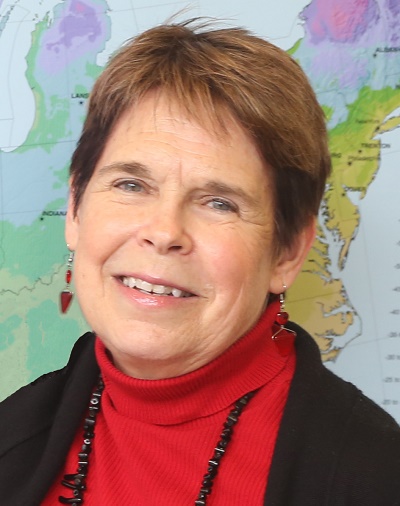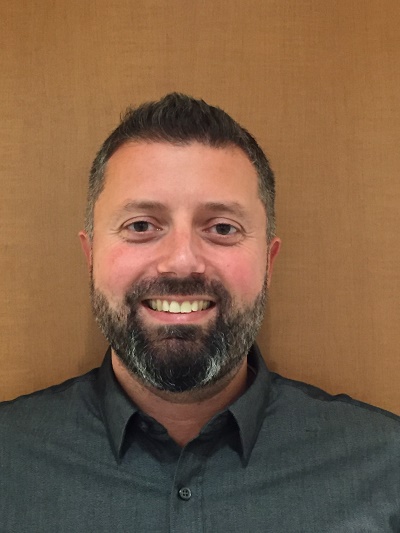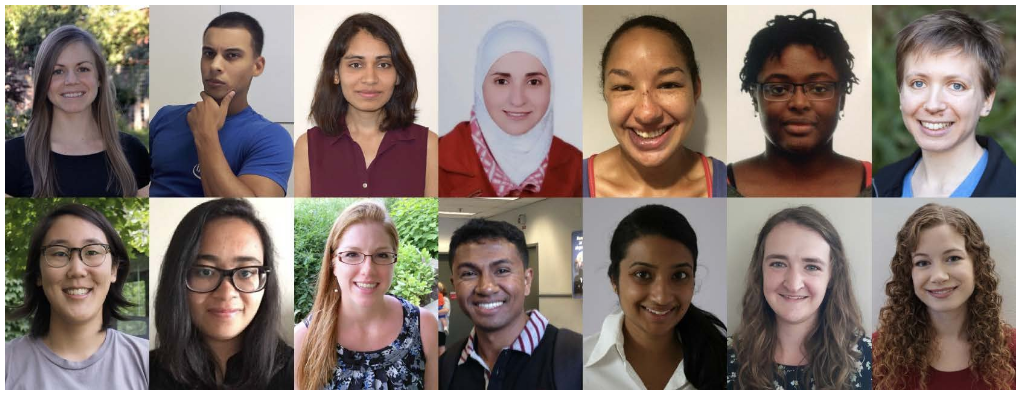Last year at SC15 Intel announced a fellowship program in partnership with ACM SIGHPC aimed at increasing the participation of under-represented groups – women students and those with diverse racial and ethnic backgrounds – in computational and data science graduate programs worldwide. The 14 winners were announced in July and now those recipients will be formally recognized at the SC16 awards ceremony on Thursday, November 17, 12:45pm – 1:30pm.
The Fellowship includes a stipend of US$15,000 annually for five years with progress to be evaluated annually by ACM SIGHPC based on a brief report from each recipient.
Ahead of tomorrow’s awards presentation, we interviewed Cherri Pancake, vice president of ACM and Professor Emeritus of Electrical Engineering & Computer Science at Oregon State University, and Hugo Saleh, director of marketing and enabling, Scalable Datacenter Solutions Group, Intel.
HPCwire: When you look at the issue of diversity in HPC, what are the biggest needs and priorities you identify?

Cherri Pancake: Our community faces two challenges here. The first is to grow the computing pipeline to meet the expanding demand. There aren’t figures specifically published about the demand for HPC professionals, but the Bureau of Labor statistics reports that we already have 200,000+ jobs in computing that aren’t being filled, and by 2022 that number will grow to about 1 million. Where are these new hires to come from? The big untapped pool is women and minorities, who account for two-thirds of the U.S. labor force but very little of the computing profession.
The second is to shape our community’s growth in such a way that the workforce will be representative of everyone who could use future HPC systems, software, and tools. To do that, we simply must increase the number of women and minorities pursuing careers in HPC-related fields. Doing so will also help ensure that future products leverage the most diverse and original ideas available.
These challenges can only be met by increasing the diversity of the computing workforce in general, and the HPC workforce in particular.
HPCwire: In the last few years, we’ve seen the launch of formal and informal efforts aimed at fostering broader engagement in HPC and IT more generally. Are you hopeful that a positive change is in motion?
Pancake: I am hopeful, but it takes more than a few years to know which efforts will work and can be grown into large-scale, successful programs. The good news is that we are observing a shift in the emphasis that organizations from all parts of our community are placing on these issues. There is a growing realization that we cannot build the kinds of products that will help people address global challenges effectively without a workforce encompassing the broadest possible set of skills and life experiences.
HPCwire: Can you explain the importance of the ACM SIGHPC/Intel Computational & Data Science Fellowships program to a young researcher’s career?
Pancake: We can’t overstate the importance of helping these exceptional students meet their financial needs. Candidates from underrepresented groups, in particular, often face financial obligations beyond those of university students in general, such as the need to contribute support to their families back home. The Fellowship funds help outstanding students close gaps in their educational funding, allowing them to focus more completely on their studies.
We also like to think of this program as providing graduate fellowships “with a twist” – that is, designed to capitalize on indicators of leadership as well as academic success. We recruit nominations on an international level, targeting students who not only would broaden diversity but also have a demonstrated track record of visibility and leadership (as mentors, role models, student leaders, etc.). To maximize the future impact of these students in changing workforce culture, we focus on disciplinary areas that typically require teamwork and strong communication skills as well as expertise.
Our hope is that by consistently selecting outstanding candidates for both their leadership and technical skills, the program will become a calling card for quality as these students graduate and enter the professional workforce.
HPCwire: What can you tell us about the first group of fellowship winners?
Pancake: To be honest, the evaluation committee was blown away by the quality of our first group of applicants. Selecting just fourteen winners from this talented pool was an extremely difficult task. The awardees are from the United States, Canada, and the United Kingdom, with about a third of the awards for study outside the US. About 85% are female and 30% are from minority groups that are typically underrepresented in computing. Three of the students are M.S. candidates, with the remainder pursuing PhDs. Five broad disciplinary areas are represented: biology and bioengineering, computational and computer science, geoscience and environmental engineering, materials science, and astronomy. Their 14 institutions span the spectrum of size and research ranking. They’re truly a stellar group.
HPCwire: Why is diversity in HPC/data science important, and important to Intel?

Hugo Saleh: HPC and data science are being applied to a growing range of challenges. The more diverse points of view we can bring to bear on these challenges the better the solutions will be. Unfortunately, the technology industry has struggled with inclusiveness. Here in America less than 15 percent of engineers are women and less than 4 percent of engineers are African American (source). Intel has a strong commitment to increasing female and under-represented minority representation in STEM fields, and the ACM SIGHC /Intel Computational and Data Science Fellowship is one way to help improve the diversity of the HPC community. This will not only open up amazing career opportunities for these talented individuals, but will also bring new perspectives and ideas to build a stronger, healthier society.
HPCwire: Why did Intel help create this fellowship and how does the program fit with the company’s overall mission/goals/culture?
Saleh: Intel’s mission is to make amazing experiences possible for every person on Earth, and part of this is a corporate commitment to improving the diversity of the tech industry. The ACM SIGHC /Intel Computational and Data Science Fellowship was created to help outstanding women and under-represented minorities gain advanced training in computational and data science so that they can apply these skills to solve problems that are important to all of us. We’re excited to see the impact that these new computational and data scientists will have.
Are there plans to award a new group of fellowships in the future? Is this annual?
Saleh: Intel has committed $300,000 per year for the next five years to fund the fellowship, and will work with SIGHPC, the ACM special interest group on High Performance Computing to manage the fellowship awards. The fellowships are renewable for five years and new awards are expected each year.
Meet the 14 Winners…

Courtney Armour is a PhD student in the Molecular and Cellular Biology program at Oregon State University. As a researcher in Dr. Thomas Sharpton’s lab, Courtney uses high-throughput computational and statistical modeling techniques to determine how the diversity and function of the gut microbiome associates with human health. She also teaches courses in quantitative genomics. Prior to arriving at OSU, Courtney earned a bachelor’s degree from Arizona State University in Biological Sciences with a minor in mathematics, obtained a Certificate in Applied Biostatistics from the University of Washington, and spent her free time studying viral replication. Courtney is also passionate about empowering young girls to pursue careers in STEM fields and volunteers with local outreach programs to expose elementary school girls to the fun and excitement of science, technology, and mathematics.
Michael Barrow is a Computer Science PhD student at UC San Diego under Professors Ryan Kastner and Sonia Ramamoorthy MD. His research focus is applied augmented reality in telemedicine and robotic surgery. He received a BEng and MSc from Bournemouth U and HKUST in Computer Engineering and Electronic Engineering respectively. Michael has varied experience in HPC and computer vision at Intel Corp, ARM research and Fusion Inc, which he co-founded in Hong Kong. His personal interests are diversity and education in computer science, which he engages in with student mentoring and educational research at UCSD.
Monica Chelliah is currently pursuing her MPhil in Scientific Computing at Cambridge University and is the recipient of the very first ACM SIGHPC/Intel Computational and Data Science Fellowship. She graduated from Mount Holyoke College with a Bachelor’s degree in both Chemistry and Computer Science. Monica also worked for two years as a developer at Schrodinger, a company that develops chemical simulation software, before heading off to graduate school. While Monica originally hails from India, she has lived and studied in several countries, including Sweden and Lebanon.
Dimah Dera’s research interests at Rowan University include biomedical and statistical signal and image processing, as well as biological and social network analysis and control. During her M.S. studies, she developed a novel automated multiresolution image segmentation approach. The aim of her MS project was to move the field towards image-based classification of brain tumor severity, incorporating image-derived measures into clinical decision-making and monitoring of therapy. The automated segmentation approach was able to detect different intricate regions in the brain (e.g., gray matter, white matter, tumor, necrosis and swelling), accurately delineated them and correlated their volumetric measures to clinical disability. The preliminary results of this segmentation approach have recently received the Best Paper Runner-up Award at the IEEE International Conference on Bioinformatics and Biomedicine (BIBM).
Cylita Guy is a PhD student in the Department of Ecology and Evolutionary Biology at the University of Toronto. Broadly interested in zoonotic diseases and their wildlife reservoirs, Cylita’s thesis focuses on bats and their pathogens. Using a combination of field surveys and computational methods she is investigating why bats seem to be so adept at carrying so many viruses. When she’s not in the field catching bats or at her computer analyzing data, you can find Cylita educating the public about diverse scientific topics at the Ontario Science Centre or hosting various bat-themed workshops and talks. Cylita hopes that with effective communication and enthusiasm, she can help others foster their own senses of curiosity and discovery about the natural world.
Samniqueka Halsey is currently a doctoral candidate in her third year at University of Illinois in the Program of Ecology, Evolution and Conservation Biology. Her research involves using computational modeling to understand the role wildlife hosts play in the spread of Lyme disease. She obtained her Bachelor’s in Biology from Northeastern Illinois University and her Masters’ in Biological Science from Chicago State University. Before starting her Ph.D. program, Sam worked as a substitute teacher in Chicago and as an Adjunct Instructor at the College of Lake County teaching Environmental Biology. Her research experience includes working at the Morton Arboretum, first as a Conservation Biology Research Intern and then being promoted to a Research Assistant. Sam is serving as the outreach coordinator for STEMFem, a UIUC student organization aimed at empowering underrepresented women in STEM graduate studies. She has led several outreach events, including creating workshops teaching elementary-aged students to code using open source agent based models.
Deborah Hanus is a PhD candidate in Computer Science at Harvard University, where she uses machine learning to help doctors prescribe medications more effectively. Previously, as a Fulbright Scholar in Cambodia, she investigated how education translates to job creation, particularly in the technology sector. She received her undergraduate and master’s degrees in Computer Science from MIT, where her research focused on developing mathematical models of human visual perception.
Jaye Harada received her BS in physics from UC Santa Barbara in 2013. Prior to graduate school, she worked in a materials science group at UCSB for two years. She is currently a graduate student in the materials science and engineering department at Northwestern University. Her thesis work focuses on the computational study of structure-property relationships in mixed anion compounds.
Irish Medina is a graduate student at the University of Waterloo with a research focus on machine learning. Previously, she was involved in data mining research at the University of Manitoba and served as a bioinformatician at the Public Health Agency of Canada where she led the development of epidemiology software related to tracking antimicrobial resistance in the global population. In addition to being an ACM SIGHPC/Intel fellow, she is also the recipient of highly competitive and prestigious national and international scholarships, such as the NSERC Canada Graduate Scholarship and the Generation Google Scholarship for North America. Recently, she returned from an internship at Intel Corporation where she developed a flow-based programming tool for Intel’s design engineers. Currently, her research interests are in the area of applied machine learning.
Heather Peacock is a PhD student at Western University studying primate biogeography and conservation GIS. Previously, she completed her MSc at the University of Calgary (doing a conservation planning and modeling project for the lemurs of Madagascar) and her BSc in Wildlife Biology from McGill University. Heather’s current research involves a global GIS analysis of primate biogeography and extinction risk, looking at how primate distributions and diversity patterns have changed over time in response to forest habitat loss, to inform primate conservation. Heather was a significant co-author on a major “Policy Forum” publication in Science (2014) that dealt with lemur conservation – a commentary paper that received world-wide media attention, generated letters to Science and is widely cited in the current literature. She has a strong background in and passion for biodiversity, wildlife biology, environmental conservation, and geographic information science. She is an Esri Canada Scholarship recipient, an Esri GIS Ambassador for the London, Ontario area, and has developed a workshop for teachers emphasizing problem-based learning in GIS.
Tahiry A. Rajaonarison is a second year PhD student at Virginia Tech working in the Geodesy and Tectonophysics Lab in the Department of Geoscience. Before moving to Virginia, Tahiry lived in his hometown Antananarivo, the capital of Madagascar and attended the University of Antananarivo where he obtained his Bachelors of Science in Physics (2010) and Masters of Science in Geophysics (2013). During this time, Tahiry became the first Malagasy expert in high precision tectonic geodesy and the first Malagasy student at the University of Antananarivo to complete a Master’s degree in English. Soon after graduation, Tahiry was awarded a prestigious scholarship from the Abdus Salam International Center of Theoretical Physics (ICTP) in Italy. This scholarship was for participation in an intensive one-year pre-PhD program in Earth System Physics. Tahiry’s academic year at ICTP taught him the important roles of data analysis and numerical modeling using high performance computing to solve geophysical problems. Tahiry’s current research focuses on testing the role of viscous asthenosphere-lithosphere in Madagascar using both new GPS observations of surface motions to quantify surface motions that he collects in Madagascar. and high performance computing with the code ASPECT to test the physics driving surface motions.
Meena Subramaniam is currently a third year graduate student at University of California San Francisco in the Biomedical Informatics program. She completed her undergraduate education at MIT in 2014, with a joint major in Computer Science and Molecular Biology. While at MIT, she worked in Ernest Fraenkel’s lab applying network flow algorithms to study protein-protein interactions. Currently, she is coadvised by Jimmie Ye and Noah Zaitlen at UCSF and plans to complete her thesis work on developing statistical methods for genetic data, specifically focusing on autoimmune diseases.
Victoria Tolls is currently a Master’s of Science student in the School of Computing at Queen’s University in Kingston, Ontario. She received her Bachelor’s degree in Bioinformatics in 2016 from Carleton University in Ottawa, Ontario. Victoria’s current area of research is biomedical informatics, with a particular focus on heart rate variability in the Intensive Care Unit. Her thesis work involves signal processing of physiologic waveforms, as well as machine learning approaches to investigate the effect of vasopressors on heart rate variability among critically ill patients.
Anna Wright is an astrophysics Ph.D. candidate at Rutgers University, where she uses high-resolution cosmological simulations to study the formation and evolution of dark matter dominated galaxies. She earned a B.S. in astrophysics from Rice University in 2014.





























































